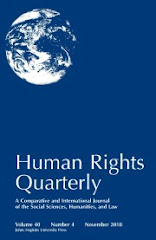This article examines what makes a crime against humanity a crime against humanity as opposed to an ordinary offense under domestic criminal law. One answer is to say that any systematic or widespread attack against a civilian population which is sponsored, supported or condoned by the State is a crime against humanity. Another interpretation is that any widespread or systematic attacks against civilians which “infringe on basic human values” should be classified as crimes against humanity.
This paper will use the Rome Statute and emerging case law of International Criminal Court (ICC) to argue that neither of the two main approaches taken thus far is satisfactory. The first approach severely limits crimes against humanity in a way that fails to account for the realities of modern warfare since most international crimes today are not committed by State actors or persons having any formal links with State institutions. The second approach, advanced by the majority of ICC judges, seems so broad that it can lead to international involvement in isolated incidents of insufficient gravity to warrant international community intervention.
The paper makes a two-pronged argument in making the case for an amendment of the definition of crimes against humanity used at the ICC. First, ICC judges need to refrain from launching a covert judicial offensive to broaden the current definition of crimes against humanity contained in the Rome Statute. Second, ICC States Parties should amend the Rome Statute to expand the scope of crimes against humanity to cover any massive violations of human rights committed by states or other organizations or groups, irrespective of whether they are sponsored by private or public institutions. In this way, they will provide a conceptual mooring for a crime that captures the popular imagination but whose historical development has led to confusing and inconsistent judicial positions in its interpretation and application.
Monday, February 4, 2013
Jalloh: What Makes a Crime Against Humanity a Crime Against Humanity?
Charles C. Jalloh (Univ. of Pittsburgh - Law) has posted What Makes a Crime Against Humanity a Crime Against Humanity? (American University International Law Review, forthcoming). Here's the abstract:





